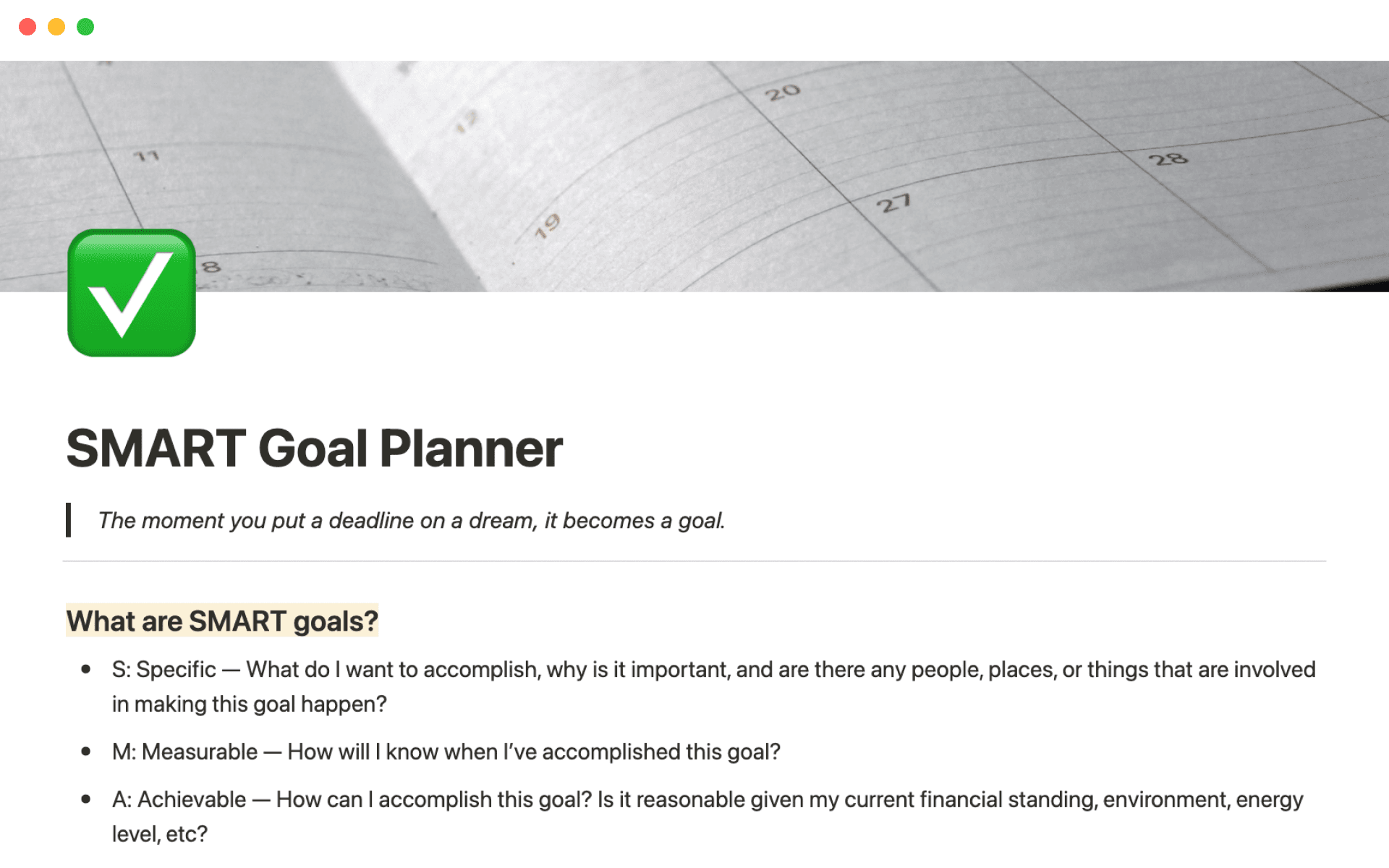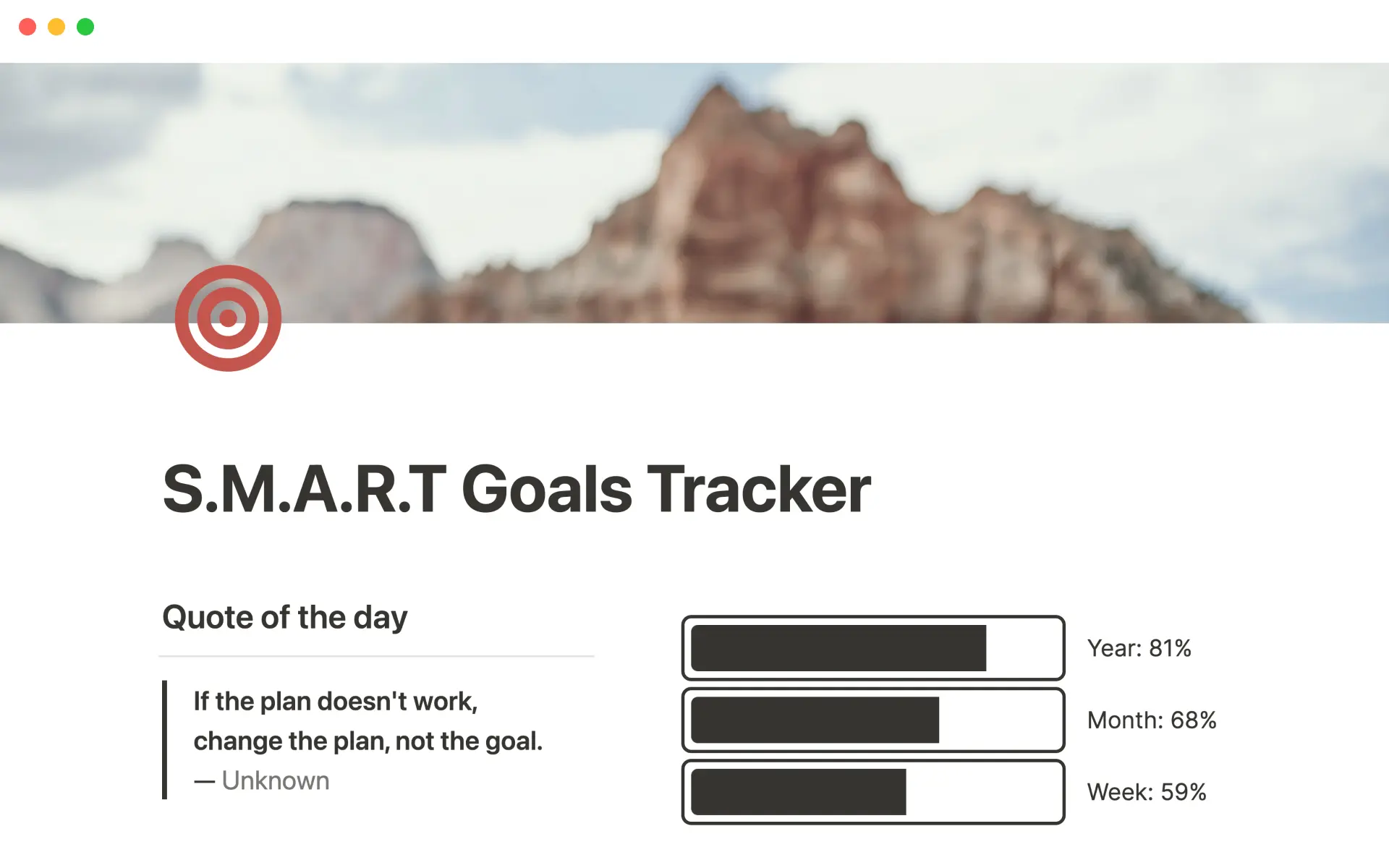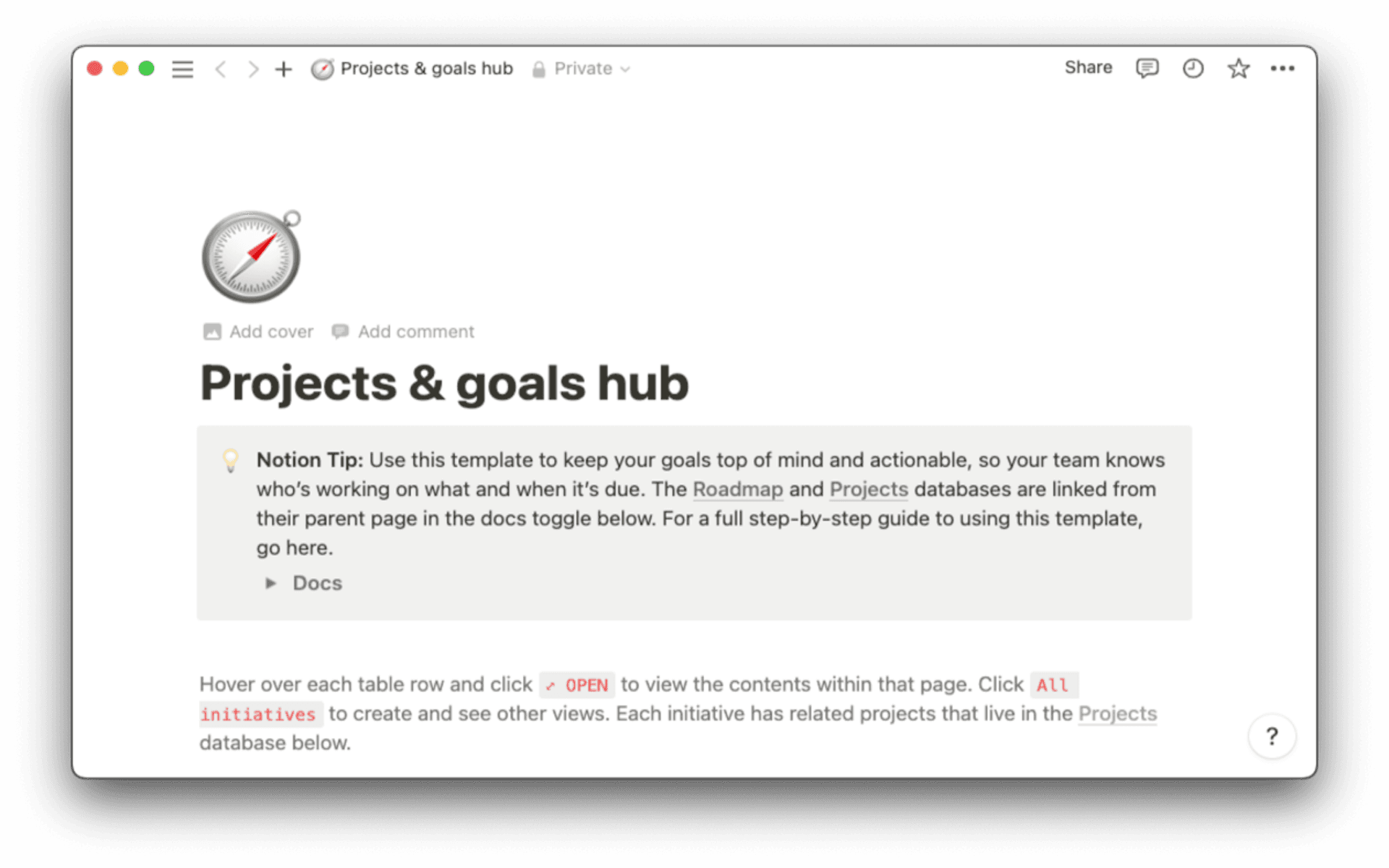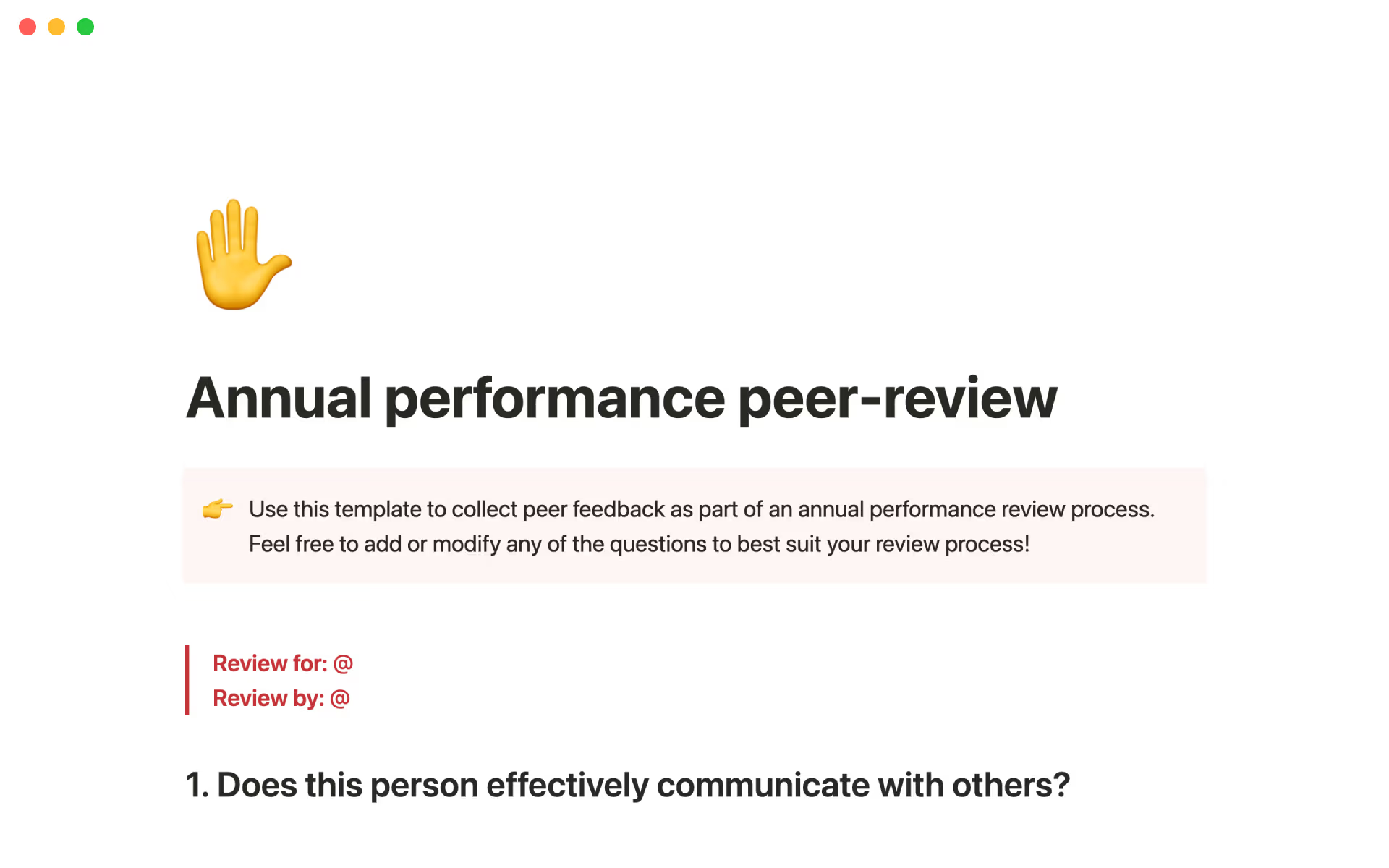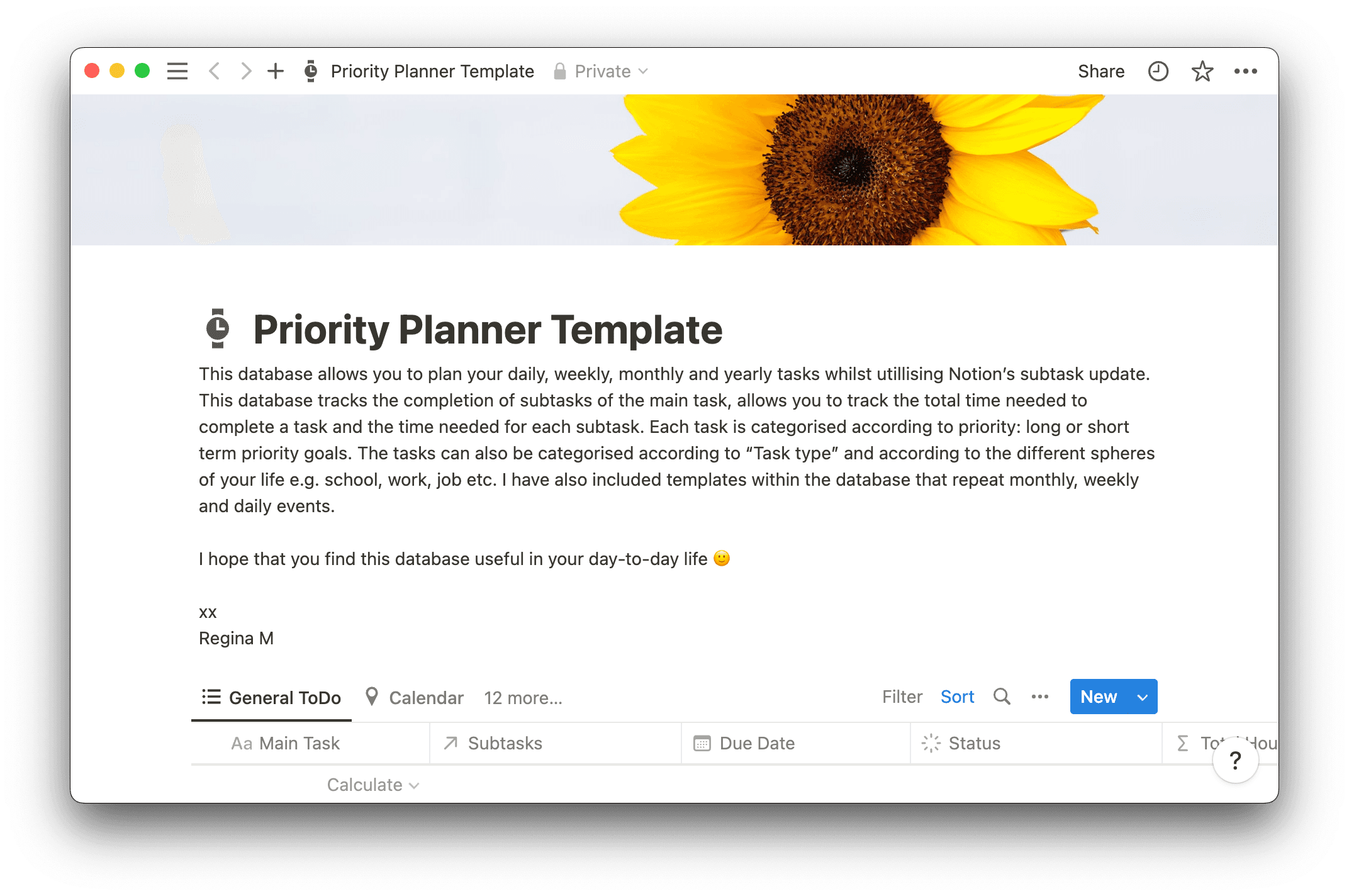Whether you’re trying to hit workplace targets or working on your personal objectives, you know how important it is to stay motivated and move forward. And you probably also know that setting precise goals can help you get there.
But there’s actually a science behind creating clear goals and how they impact your motivation: goal-setting theory.
Setting objectives is one thing, but knowing more about the psychological theory behind them can help you create more comprehensive plans and motivate yourself and your team to reach new heights.
This isn’t magic. It’s the power of the goal-setting theory.
What’s the goal-setting theory?
Goal-setting theory states that setting goals within a strategic framework — using clarity, challenge, commitment, feedback, and complexity — leads to better task performance. Edwin A. Locke and Gary P. Latham proposed this theory in the late 1960s based on their research on specific, challenging, and attainable goals.
Locke and Latham found that goal-setting with the above principles in mind increases motivation and productivity in all areas, ranging from sports to academia to business. They also discovered that receiving feedback, getting incentives, and being held accountable all bring you closer to meeting those targets.
How does the goal-setting theory work?
The goal-setting theory of motivation works by choosing clear objectives from the start. This means that how you plan and track them directly affects whether or not you’ll feel motivated enough to see them through.
In goal setting, you start with one objective. This focuses your efforts on a clear target and removes distractions. With a singular end in sight, you can now chart a path to get from point A to point B and track your progress along the way.
And the quality of your goal — making sure it’s clear, involves enough challenge, and offers opportunities for feedback — is part of this process.
A vague goal won’t get you anywhere. If you’re drawing up a logo for a new graphic design client, “make a logo” isn’t a strong goal. But “create a branding presentation by the end of the quarter,” is more actionable, and you can further break it down into steps that involve check-ins along the way.
Using the five principles creates a framework for goal setting and paves a clearer path to achieving them. It increases your chances of getting the job done because you’ll hit inspiring milestones and keep track of the process the whole way through, and it makes sure your goals are realistic.

The 5 principles of goal-setting theory
Latham and Locke’s goal-setting theory has five rules that provide a framework for effective goals: clarity, challenge, commitment, feedback, and complexity. Here’s more about each one and how to implement them.
1. Clarity
The first principle of goal-setting theory is clarity, which refers to the importance of creating well-defined, specific goals. When your goal is precise, it’s easier to measure progress and evaluate whether you’re on track for success. Using a SMART goal framework — creating goals that are specific, measurable, attainable, realistic, and timely — is one way to be more clear.
Instead of setting a goal to "improve your performance," try phrasing it as "increase your sales by 10% over the next quarter." This second goal is specific, measurable, and has a clear timeframe for completion.
2. Challenge
Set goals that offer an exciting challenge but aren’t so difficult that they’re overwhelming. A little sweat is motivating — it encourages you to work harder, hone your skills, and rise to the occasion. Seeing progress on what you know is a challenging goal motivates you to keep at it.
But making your goals too hard can backfire by demotivating you. You’ll feel drained, and you might even begin to question if you’re good enough to get the job done. That’s counterproductive.
For example, if you’re just starting a running routine, setting a goal to “run a marathon” will almost definitely be too difficult. Expecting yourself to go from 0 to 100 isn’t fair. Instead, try setting a goal to “run a 5k by next month.” This could still be challenging, but it’s much more achievable with consistent training. You can save the marathon for a few years down the road.
3. Commitment
You can’t achieve a goal if you don’t commit to it. Setting goals that align with your values and interests, whether that’s a personal goal you’re passionate about or a challenge at work you’re eager to meet, can help you feel more invested. When you're truly committed to your goals, you're more likely to put in the effort to achieve them.
If you're passionate about sustainability and environmental issues, setting a goal to help reduce your company’s carbon footprint by 20% over the next year aligns with your values. This goal will keep you more committed to taking action than something totally unrelated to your interests.
4. Feedback
The fourth principle of goal-setting theory is regular feedback — positive or constructive. Clear, actionable feedback highlights areas where you need to improve and gives you the insight you need to adjust your approach.
If you set a goal to increase your website traffic by 30% over the next month, tracking your progress using analytical tools provides valuable feedback on what's working and what's not. Based on this, you can adjust your strategies to continue working toward your goal.
5. Complexity
Tailor your goals to task complexity. Setting specific goals can be effective for simple, easy-to-understand tasks, but can also be more constraining. For complex objectives with lots of moving parts, more general, flexible goals are often more appropriate, and more realistic.
Let’s say you’re working on a complex project with multiple variables and unknowns, like developing a new app. If you set an excessively specific goal, like “use a three-person team to launch a #1 app in three months,” you might not be equipped to deal with unforeseen circumstances or sudden, new variables that creep in during development. Setting a more general goal, like “launch an app in five months,” gives you room to adapt within that time frame.
Remember that setting a general goal isn’t the same as setting a vague one. A general goal still has direction, while a vague goal doesn’t. A vague goal following the example above would be “make an app.” This doesn’t tell you anything about what the app will be or when you should get it done.
Goal-setting theory: pros and cons
While Locke and Latham’s goal-setting theory is great for improving organizational and team performance, it isn’t a one-size-fits-all framework. You’ll need to adjust it to meet your needs. And before adopting it for your workflow, consider its advantages and disadvantages to better understand how it can help you out.
The benefits of the goal-setting theory include:
Clear direction — by setting specific goals, you’ll grasp what you need to accomplish and understand how to focus your energy.
Increased motivation — the goal-setting theory is all about building and fostering motivation. When you feel like you’re working toward something meaningful, you’re more likely to put in your best effort.
Improved performance — setting goals that challenge you pushes you to learn new skills or improve existing ones. As you grow, you’ll perform better across the board, and your future goals can be even bigger and more challenging.
Greater satisfaction — achieving a big goal gives you a sense of accomplishment. Tracking your progress with clear milestones can show you how you’re doing and drive you to step up and do more.
Some potential drawbacks of the goal-setting theory include:
Risk of goal displacement — in some cases, you could become so focused on achieving a specific goal that you lose sight of the big picture. You might overlook important details and sacrifice quality or values to achieve something. This can happen when you over-emphasize performance without remembering why you’re committed.
Unrealistic goals — goals need to be challenging but attainable, and that’s a very fine line. If you set unrealistic or difficult goals, you can frustrate and demotivate your team. If they're too easy, by contrast, you won’t feel a sense of accomplishment.
Lack of adaptability — the goal-setting theory asks you to set specific, clear goals. But that’s not always the best type of goal for your project. As we mentioned above, if your project has a lot of moving parts and you plan on learning along the way, a narrow goal may not be the best option. Set a more general goal with sub-goals or milestones to account for the project’s complexity and leave room for creativity.

How to use the goal-setting theory at work
Whether you’re a manager trying to improve your team goals or interested in leveling up your own performance, goal-setting theory provides a good framework. Here are five steps to applying this theory in your workplace:
Set an objective — start by pinpointing what you want to achieve. This is just the beginning, so it’s okay to just have a general idea of your overall goal. Maybe it’s to learn JavaScript to improve at your job.
Make it specific — find a way to narrow down your goal, and be honest about how realistic it is. If you’ve never learned to code before, mastering JavaScript by the end of the month isn’t achievable. Your goal instead could be to take and pass a beginner coding class by the end of the year.
Create an action plan — break down your goal into milestones and individual tasks and determine how to get to the finish line. Find a JavaScript course that works for your schedule and put it into your calendar.
Track progress — use metrics and key performance indicators (KPIs) to track how you’re doing. If your JavaScript course has a final test you need to take, write down your results and make an effort to keep improving. Seeing your progress will keep you motivated as you fine-tune your approach.
Get feedback — regular feedback helps you adjust your approach or bolster areas of weakness so you continue to make steady progress. Once you finish, ask your course instructor how you’re doing, and take note of concrete ways to improve.
Ready, goal-set, go!
Use Latham and Locke’s goal-setting theory as a tool to make your objectives bigger and better. Tracking your goals is an important part of the process, and Notion can help you keep everything in one place, whether you want to boost job satisfaction, track employee performance, or find concrete ways to work on your well-being.
Create a connected environment that pulls together your schedule, to-do lists, and more, so when you set goals, you have a space that helps you achieve them. Check out our goal-setting template and try Notion for free.

